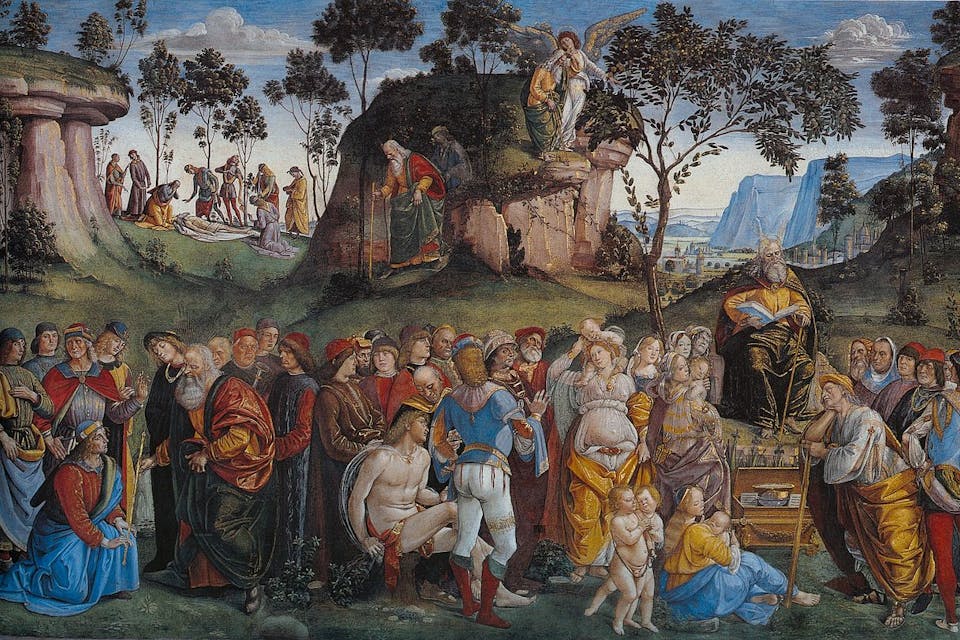
October 18, 2019
God, Moses, and the Mystery of the Missing Kiss
By Marc Michael EpsteinWhy, in all of Jewish art, is there no image depicting the moment of Moses’ death?
For the nearly five million annual visitors to the Sistine Chapel, the “main events” are the ceiling painting of the creation of Adam and the altar-wall painting of the Last Judgment, the two gigantic masterpieces by Michelangelo. But when I visit this jewel-coffer of a space, I find myself quietly gravitating to one of the benches that line its sides.
From that marginal perch, my focus is less on Michelangelo’s central works than on the chapel’s long north and south walls, which display the less inventive though no less magnificent work of Perugino, Botticelli, Ghirlandaio, Rosselli, and d’Antonio. In depicting episodes from the life of Moses (north) and of Jesus (south), these paintings offer Christians the opportunity to reflect on how their faith conceives the latter’s ministry as the fulfillment and completion of the former’s mission.
As a scholar of religious art in general, I’m of course interested in how this exegetical move (called “foreshadowing” or “typology”) plays itself out visually. But as a Jew with an interest in the depiction of Jews in art, I’m drawn more to the wonderful portrayals of the life of Moses (including the panels showing him receiving the Torah and the punishment of Koraḥ and his band of rebels), rendered in elegant Renaissance settings that mix classical architecture, perspective, and modeling of figures with contemporary Italian fashions. It’s all densely conceptualized, gorgeously designed, and beautifully executed.